When a chicken farm sells all the eggs their 1 600 chickens lay per day within 24 hours, it is proof that they are doing something right. Reyno Colyn and Belinda Hattingh farm with chickens on a farm in the Haasenjagt area some 20 km outside Oudtshoorn.
They started chicken farming on a small scale two years ago, and they are doing exceptionally well in the heart of the Klein-Karoo. Reyno grew up in the area and for the past ten years he has been a producer of vegetable seeds for the international market under the name De Haasenjagt Boerdery.
These vegetables include onions, carrots, and pumpkins, as well as salad greens such as spring onions, rocket, and basil. Reyno also used to keep ostriches, cattle, and sheep, but when his ostriches became financially unviable, he turned to chicken farming instead. As an extra source of income, he also keeps about 100 sheep, of which the offspring is sold at auctions.
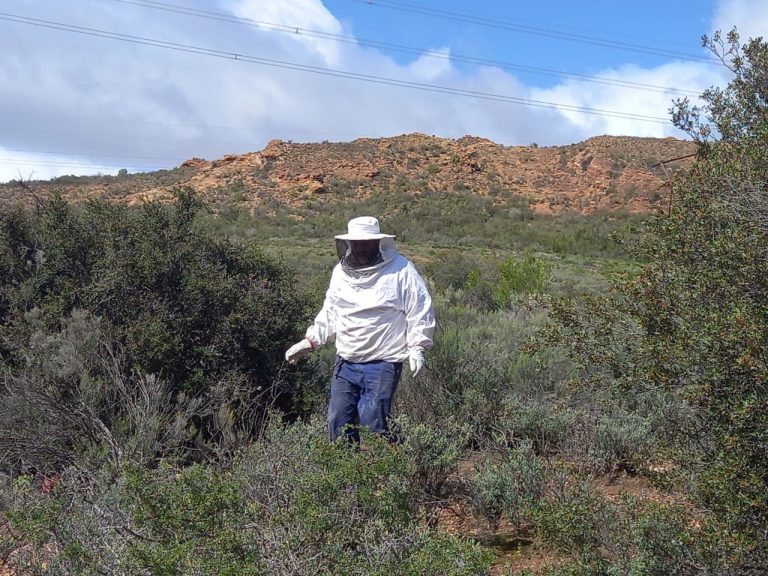
De Haasenjagt Boerdery has its own apiary to provide bees for pollination of the vegetable seed produced on the farm.
Budget
When Reyno considered chicken farming about two years ago, he decided on broilers. Initially, he and Belinda drew up a budget to ensure that the chicken business was viable, sustainable, and profitable. “With the increase in the price of fuel and chicken feed, the budget basically flew out the window and alternative measures needed to be taken in order to keep farming chickens,” explains Belinda.
Day-old chicks
Initially, day-old broiler chickens were supplied by a certain Oom Gert, who provided good-quality, strong chickens. It worked well for quite a while until Oom Gert retired. “Ever since, we have battled to find day-old chicks as good as those he provided, but to no avail.”
Eventually, Reyno decided to start focusing on layers to produce free-range eggs, and to incubate eggs to produce his own day-old chicks. As he couldn’t stop selling broilers immediately, Reyno invested in 200 parent stock for hatching eggs for day-old chicks that could be raised as broilers. Later he started to hatch his own layers as well. At present, De Haasenjagt Boerdery keeps about 300 broilers and 1 800 layers.
On average, the hens each lay an egg every other day, but Belinda, who does the bookkeeping, doesn’t keep exact track of every individual hen’s production. She does however keep count of the total number of eggs laid per day to pick up any problems indicated by a lower-than-usual number. The farm provides eggs to restaurants, guest houses, bakeries, friends, or whoever learns about them and wants to buy eggs.
“We are very lowkey as this is a small-scale business,” says Belinda. She does the marketing on Facebook and she also has quite a large WhatsApp group to which she adds new customers and announces any specials.
“This is a small community, and the news is also spread by word of mouth. It is not as if we have truckloads of eggs leaving the farm. The eggs are usually sold within 24 hours of being laid. Often someone will call in the morning ordering about ten trays of eggs, which we pack and deliver on the same day.”
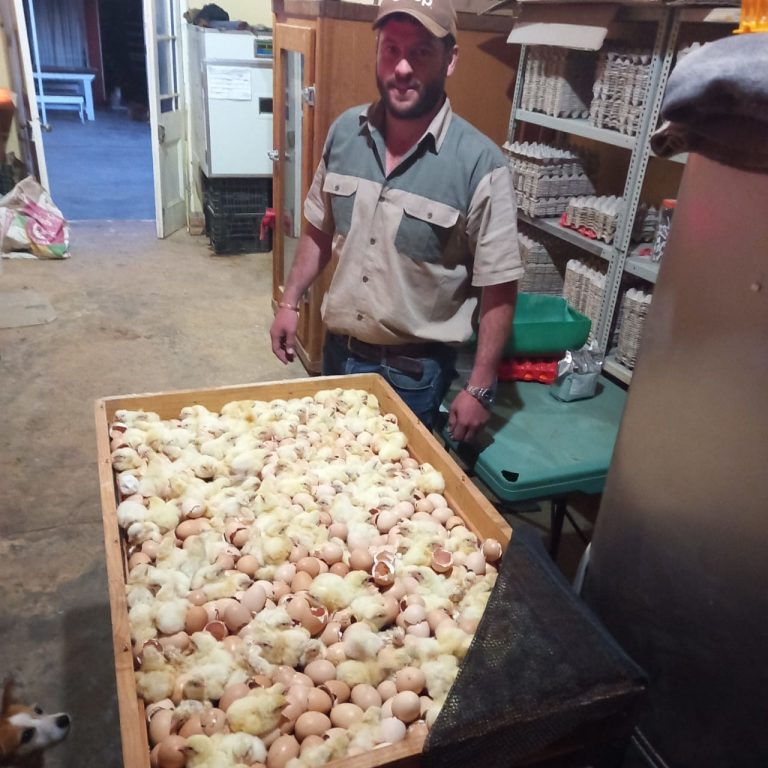
Chickens emerge from the shells in the hatching box.
Brooder boxes
To house the day-old chickens, they used custom-made wooden boxes. “We built custom-made wooden crates that are elevated above the ground, and sealed them,” explains Belinda. A thick layer of very fine woodchips on the bottom keeps the chicks warm and dry. The chickens remain in the nursery for fourteen days before they are moved to their sheds.
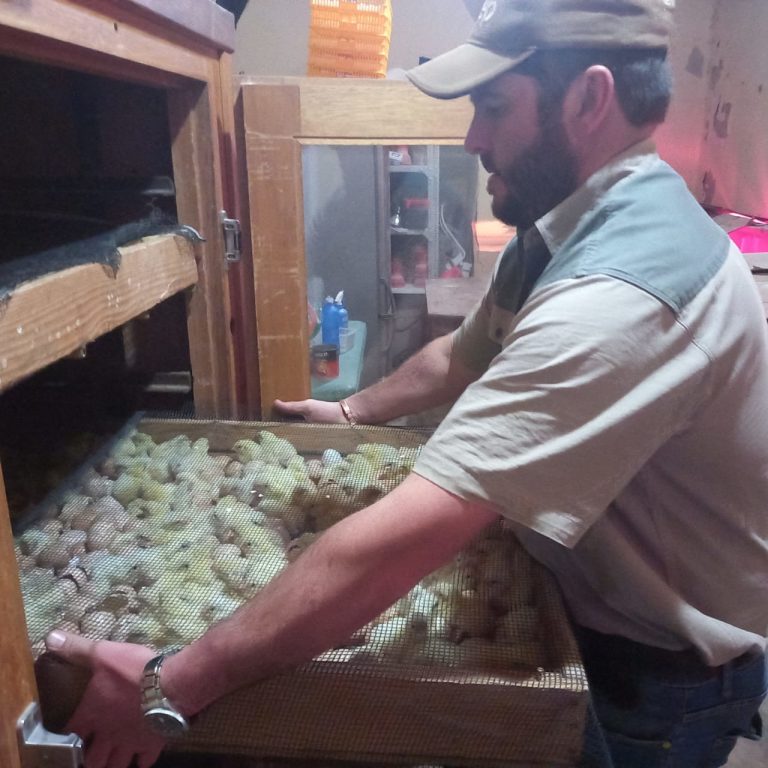
Reyno Colyn with a tray of day-old chicks from his own hatchery.
Sheds
There are four sheds that can house approximately 500 chickens each – one for pullets of different ages, two for layers and one for broilers. After the young chickens are moved to one of the sheds, they again remain behind closed doors for another week. Once the doors are opened, they roam freely. The doors are closed at night to keep them from prowling predators, which include cats, mongooses, and snakes. The sheds have massive windows for ventilation and are provided with canvas or hessian curtains that can be closed when it is windy or raining. Like the brooding boxes, the sheds also have a temperature regulator for controlling the heat. The floor is cement for proper sterilisation between groups of hens.
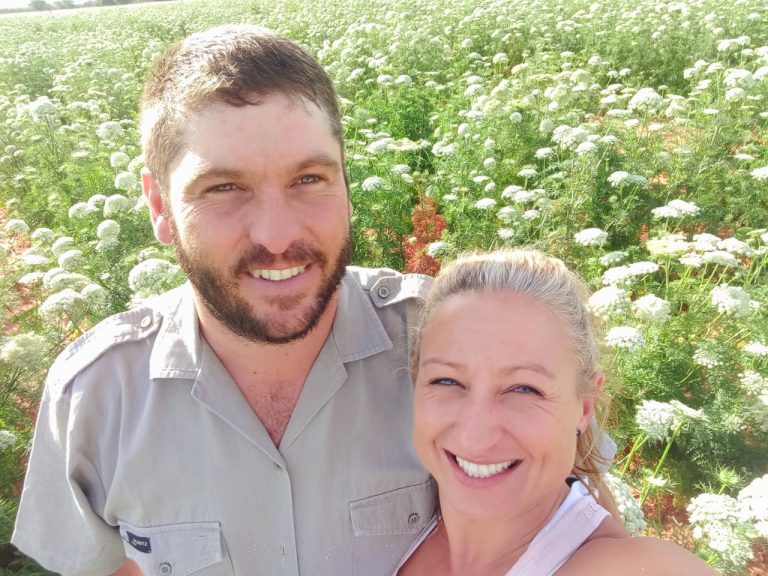
Reyno Colyn and Belinda Hattingh.
Finely chopped woodchips are used as bedding. “It is very important that the chickens are kept warm during winter, but equally important they are kept cool during summer when temperatures in the Klein-Karoo can soar to 40 °C or more.” During the day the door remains open for the chickens to come and go as they please. When it is that hot outside and it is impossible to walk comfortably on the baked earth, it is important for the chickens to have a cool refuge inside.
“We try to contain them in a fenced yard adjacent to the sheds, but they fly over. Sometimes I find them on the couch in the house, and we have found eggs in the braai place – it must be those chickens that couldn’t make it back to their home-made wooden nesting boxes in time! “The henhouses have a sleeping area, which is basically like a chicken jungle gym with perches at different heights.”
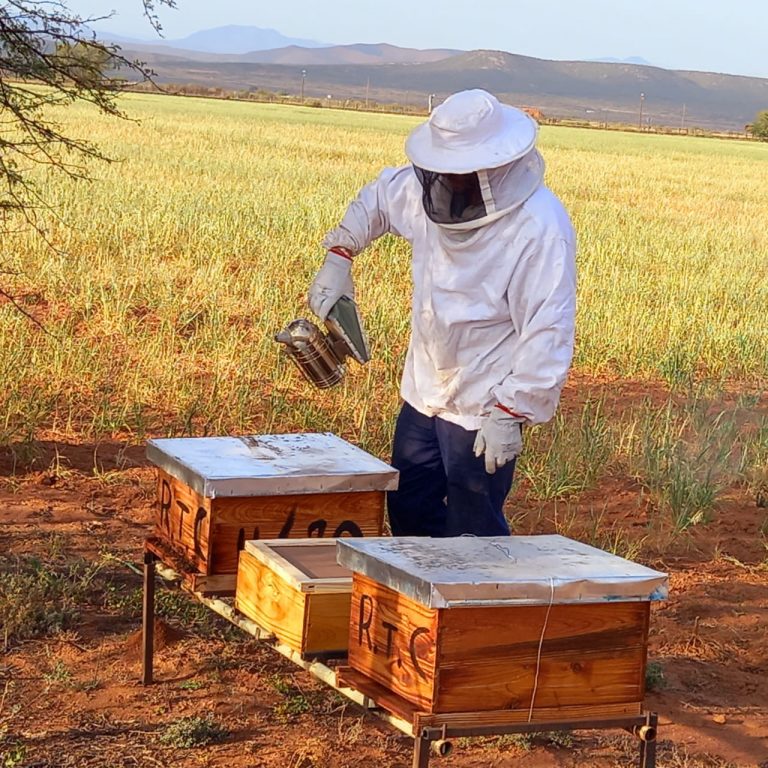
Reyno Colyn working with his bees.
Water and food
Water is provided by gravitation from tanks to either saucer drinkers for the day-olds, or drinkers suspended from the roof of which the height can be adjusted as the chickens grow. They mix their own chicken feed, which contains a basic diet of soya, maize, barley, green lucerne and feed grade lime.
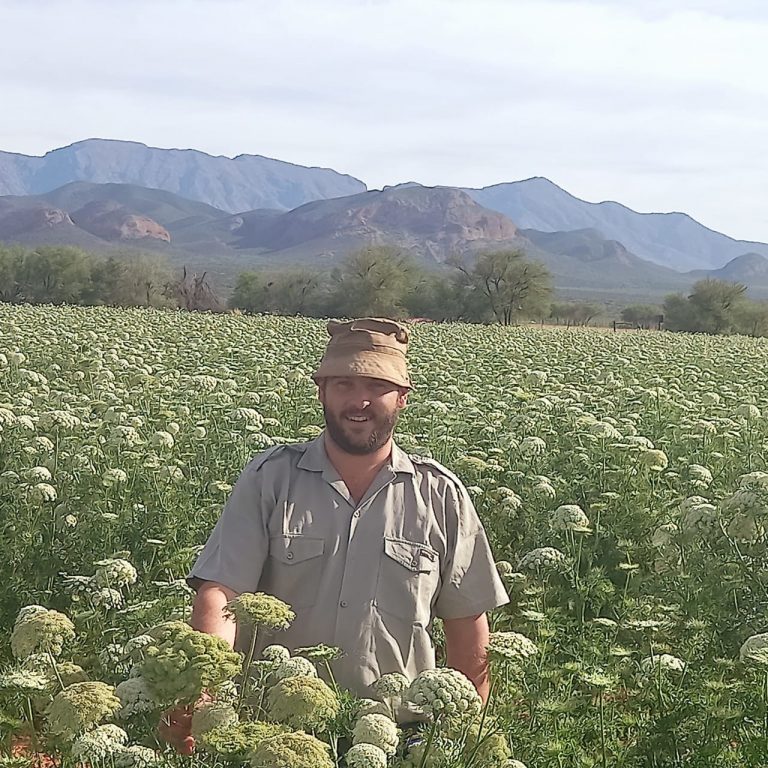
Carrots in bloom.
“The exact recipe is a secret because it provides beautiful bright yellow yolks!” Once the chickens are no longer viable to keep as layers, they are sold to backyard farmers who do not care how often eggs are produced.
Contact Reyno Colyn on 072-901- 5650 or De Haasenjagt Farms on Facebook.

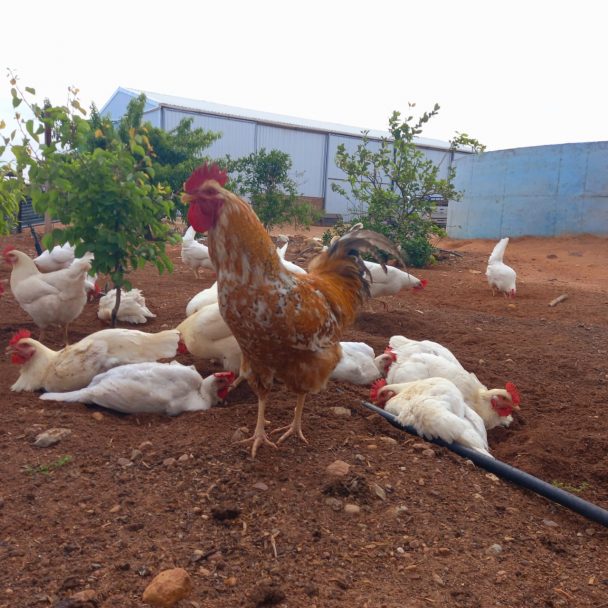








Greetings from Idaho! I’m bored at work so I decided to browse your site on my iphone during lunch break. I really like the info you provide here and can’t wait to take a look when I get home. I’m shocked at how quick your blog loaded on my cell phone .. I’m not even using WIFI, just 3G .. Anyways, superb blog!
Excellent article. I will be dealing with some of these issues as well..
Greetings! Very helpful advice within this post! It is the little changes that produce the most significant changes. Thanks for sharing!